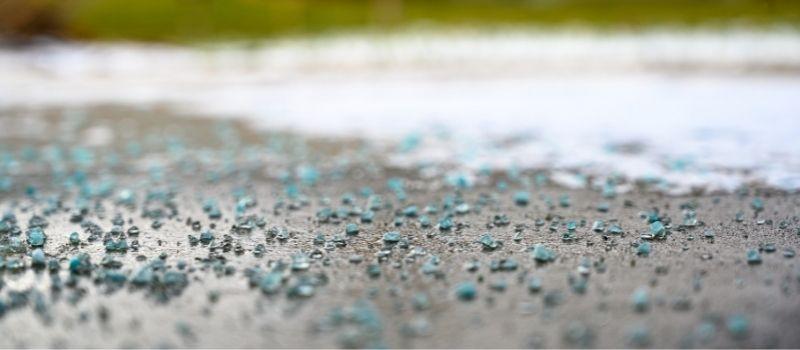The UK weather can be temperamental. One day it’s clear, the next it’s raining, and the day after it's icy. The best way to be prepared is to regularly check the weather forecast. You need to make sure you are ready for anything.
Arguably the most difficult weather condition to manage is snow and freezing temperatures. To make things that bit more complicated, the products used to prevent ice aren’t the easiest to get your head around.
If you are in a grit and rock salt confusion, our guide will help you discover all you need to know.
Why rock salt and grit?
The main reason rock salt is effective is that it has a lower freezing point than water. By spreading rock salt onto a road, path or driveway, when vehicles or pedestrians use it, the crystals crush and spread across the ice. This will cause a reaction between the water molecules and rock salt, preventing ice from forming.
However, you need to know that rock salt has a limit. On average, rock salt will have minimal effect on temperatures below minus five and have virtually no effect on temperatures below minus ten.
There are two different types of rock salt, brown salt and white salt. Each type has its own advantage.
Brown Salt:
Drier form of grit that is easier to spread
Cheaper form of rock salt
Lower carbon footprint
White salt:
Cleaner product – won’t leave a dirty residue after use, and it won’t stain paving
Recommended for use in public areas as it is more aesthetically pleasing
When is the best time to spread salt?
The optimum time to spread rock salt is before freezing temperatures are forecast. Spreading an even layer of salt on your surfaces prior to reaching freezing temperatures, will help prevent the snow/rain from freezing. Spreading rock salt before the cold temperatures hit will also save on the amount of rock salt needed to make surfaces safe.
We recommend you use weather websites to see when freezing weather is expected.
How much salt will I need?
The amount of rock salt to be used varies depending on the temperature and location. For example, steep hills and sharp bends will benefit from more rock salt compared to flat and straight roads.
However, we recommend that 10-15 grams of rock salt be spread per square metre. This amount can increase to 20-40 grams if weather conditions are more severe or if rain has fallen before freezing temperatures are predicted.
For example:
500 square metres area = 5000 – 7500 grams of rock salt
Therefore, if you have a 6-cu ft grit bin that holds 175kg, you can cover the area a minimum of 23 times.
If you’d like to find out more about the rock salt we have available, please contact our sales team on 01777 858009 or email sales@kingfisherdirect.co.uk.


